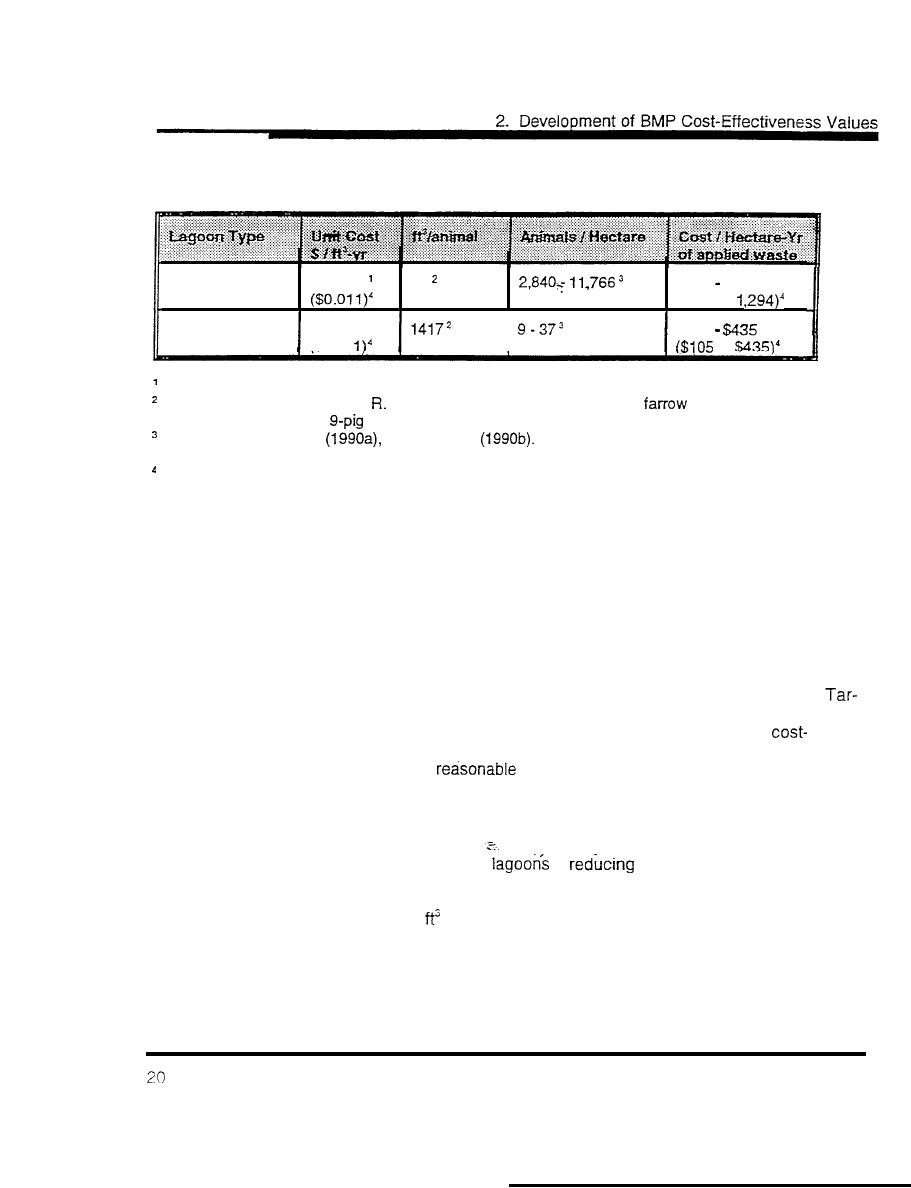
Table 2-9.
Conversion of Lagoon Cost Figures
Poultry (layer)
||content||
.008310
6 7
(2 to
||content||
.0083'Swine
5
GO.01
I
to
From Table 2-8
Based on J. Barker (1994) and
Hansard (1994). For swine, based on
to finish operation, per
sow. Includes boar and
litter.
Based on Zublena et al.
Zublena et al.
This range is due to the variable nutrient
requirements of crops receiving animal wastes.
The numbers in parentheses are presented for comparison purposes and are based on a 10 year lagoon
life span instead of the SCS estimated life span of 20 years.
Using the cost data in Table 2-9 and the effectiveness data in Table 2-4, we
present estimated ranges for cost-effectiveness of anaerobic lagoon cost sharing
in Table 2-l 0. Calculation details are presented in Appendix 6.
Lagoon Effectiveness Relative to Direct Discharge
The direct discharge of animal wastes is prohibited by North Carolina State law. It
is unlikely that direct discharges are occurring to any significant extent in the
Pamlico basin. However, the potential water quality impact of any direct
discharger may be exceedingly large. Therefore, we have calculated
effectiveness values for anaerobic lagoons relative to a pre-existing condition of
to assume that under such a scenario, the
"direct discharge". It is
operator will also begin to implement land application of the lagoon effluent.
Therefore, the post-BMP scenario for this practice is land application at
agronomic rates.
in
nutrient concentrations in
The effectiveness of anaerobic
wastes is directly linked to the size and loading rate of the lagoon. The SCS
requires that all anaerobic swine waste lagoons in North Carolina have a minimum
treatment volume of 1
per pound of steady-state live weight (R. Hansard, 1994).
The North Carolina Cooperative Extension Service maintains



 Previous Page
Previous Page
